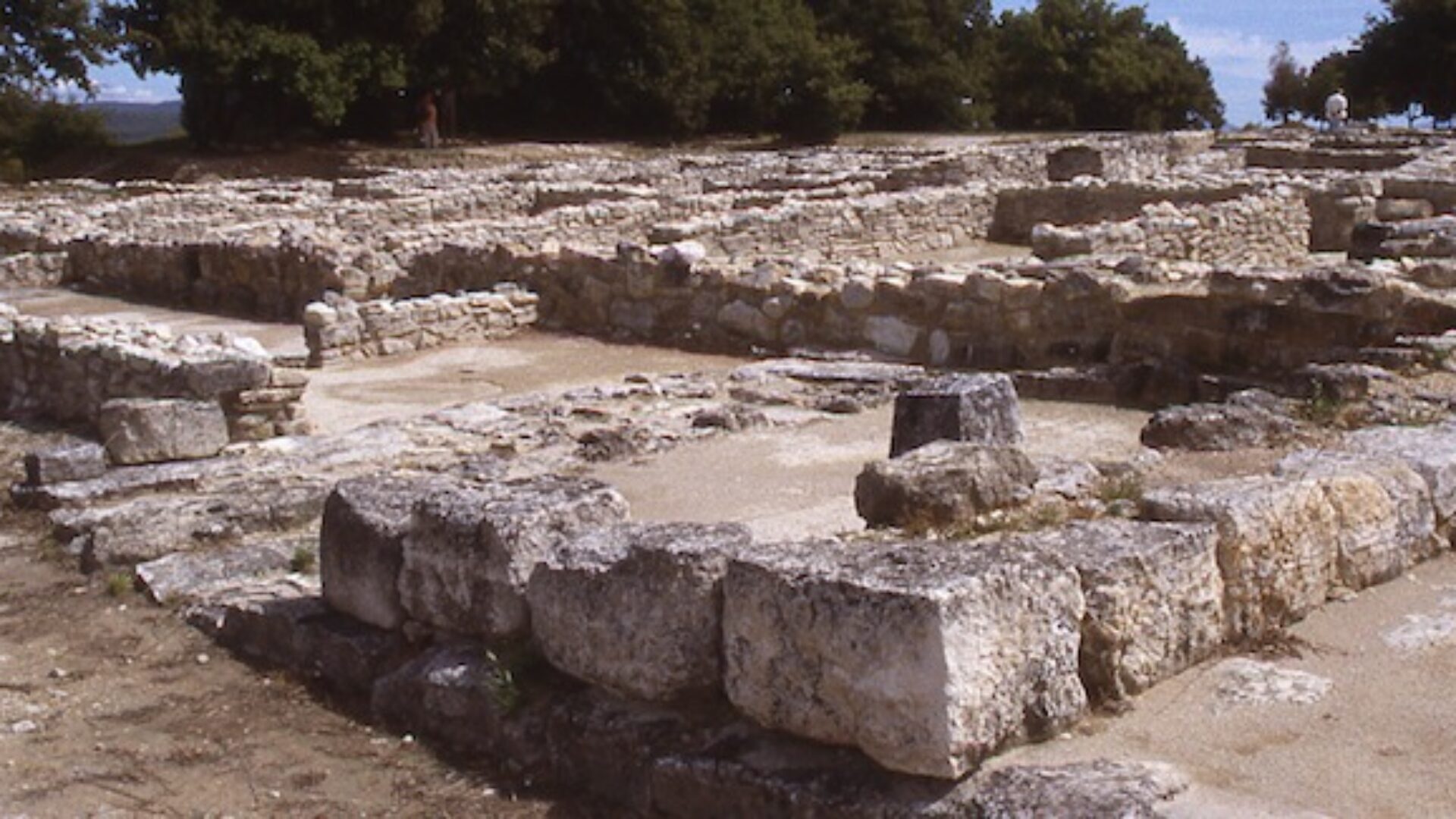From the Celtic-Ligurian Oppidum at Entremont to the new Sextius-Mirabeau Quarter, the City of Counts and the many mansion houses in the Mazarin Quarter, Aix-en-Provence is an open-air history book. With a rich and vibrant heritage thousands of years old, the capital of Provence combines elements from all times.
The story begins 2,000 years ago
Entremont, the political capital of the Celto-Ligurian Confederation, was a city open to trade. Archaeological excavations and the statues exhibited at the Granet Museum are proof of its advanced civilisation.
In 122 BC, the Romans abandoned the Entremont plateau and settled on a site where springs were bubbling up: Aquae Sextiae (the waters of Sextius) was born. Having become a Roman colony, the town was a stepping stone between Italy and Spain, and grew as an urban centre and spa. With the spread of Christianity, a new leaf was turned. A diocese from the start of the 5th century, and the seat of the Archbishop of the ecclesiastical province, Aix-en-Provence also claimed itself the capital.
The reign of the Counts
In 1182, Aix-en-Provence became home to the Counts of Provence. The town grew around three sites – the Counts’ Palace, Saint-Sauveur Cathedral and the new crafts and trading districts. It extended beyond its ancient ramparts when a large number of convents were built, including the most famous of all, the Hospitaliers de Saint Jean de Malte, which became the burial place of the Counts. Its circular wall remains from that time, beginning in the old town of Saint Sauveur.
In 1409, Louis II of Anjou founded the University. When his son René was on the throne, (1409-1480), Aix-en-Provence was efficiently administrated and became a centre of artistic creativity. This Golden Age no doubt contributed to the legend of Queen Jeanne and “Good King René”, whose statue still stands at the far end of the Cours Mirabeau. A year after his death, Provence was annexed by the Kingdom of France. But for two centuries, the town refused to accept the monarchy’s centralist policies.
The Age of the Mansion Houses
It was not until the reign of Louis XIV that this “rebellious” town became a “courtesan”, organised around judiciary and religious power. Revitalised by prodigious social and urban development, Aix changed, and architectural areas expanded. From 1646 onward, aristocrats, advisers, magistrates and prominent people left their homes in the Medieval town to settle in the new Mazarin Quarter, created by Cardinal Mazarin’s brother.
In 1650, the Parliament opened a street for horse-drawn carts in place of the crumbling ramparts, which in the 19th century became the Cours Mirabeau, named after the “idol of Provence”, a member of Parliament of the Third Estate in 1789. The richly adorned facades and monumental gates of the mansions flaunted the success of their owners. Men of letters, scholars and artists gathered in their living rooms.
Religious foundations were established in large numbers, most of them educational and medical.
A giant leap forward
The town rejected the industrial revolution and chose to live “out of time” for a century. Since the mid-20th century, however, Aix has experienced an unprecedented demographic and economic boom.
Today, the town continues the dynamic development of its university and culture. The renovation of the historic centre, the rebirth of its Lyric Arts Festival, Cité du Livre (the library), the National Choreographic Centre, the Grand Théatre de Provence and the Conservatoire bear witness to its cultural calling, open to the world.
The economic expansion of Aix is also focused around tertiary activities and high-tech companies which place the town firmly in the third millennium. This is the face of Aix at the dawn of the 21st century. It is a city on a human-scale where the preserved heritage and the town of the future coexist in perfect harmony. The Sextius-Mirabeau Quarter, the “last link” connecting the town to its new era, is the best example of this new-found momentum.













